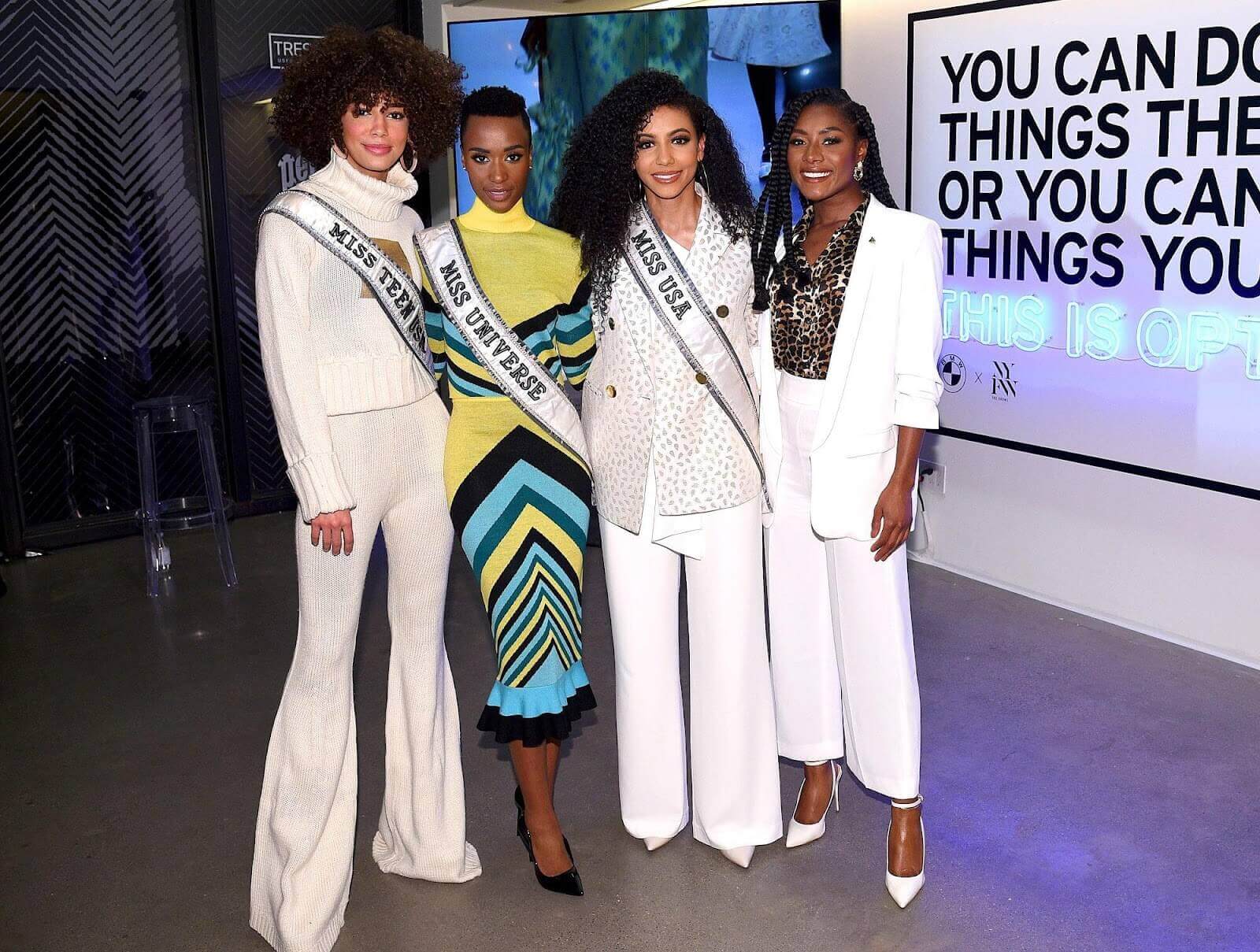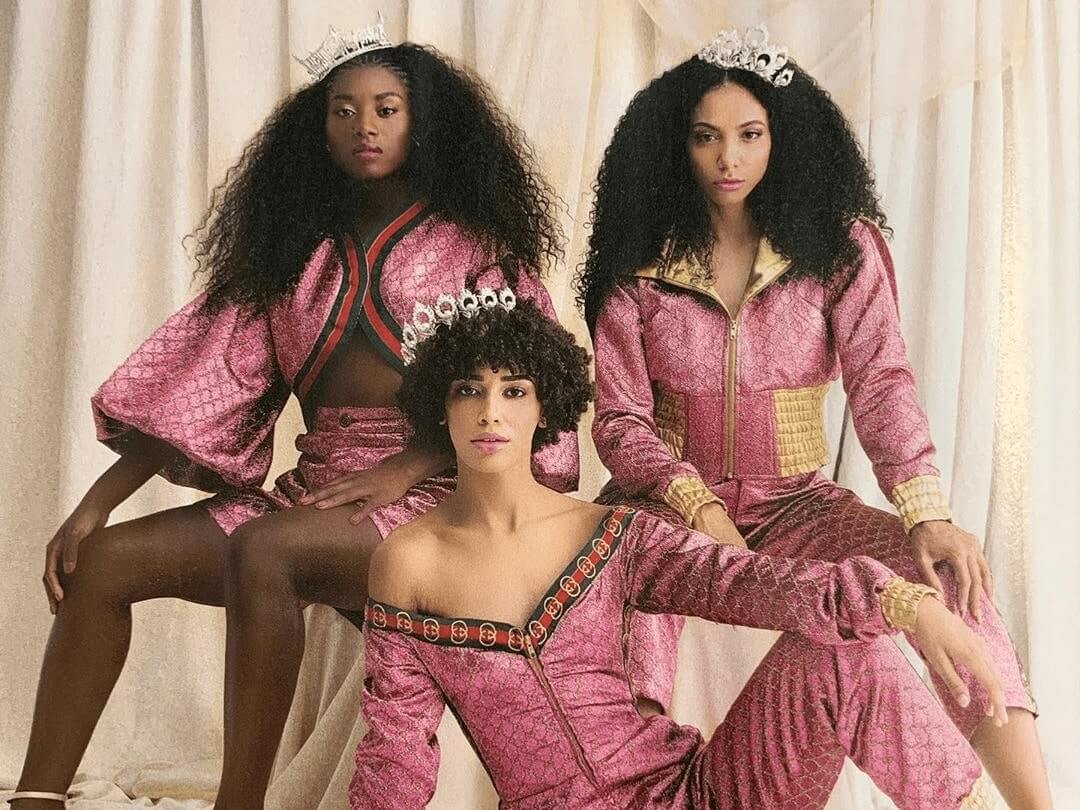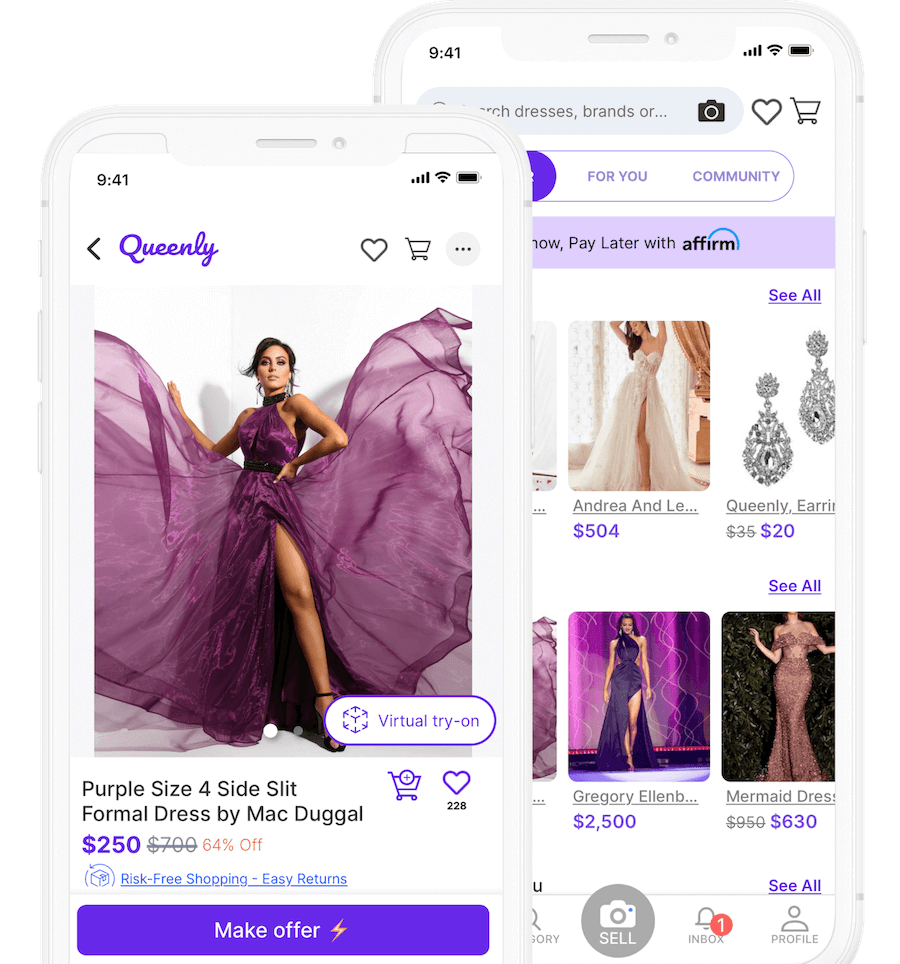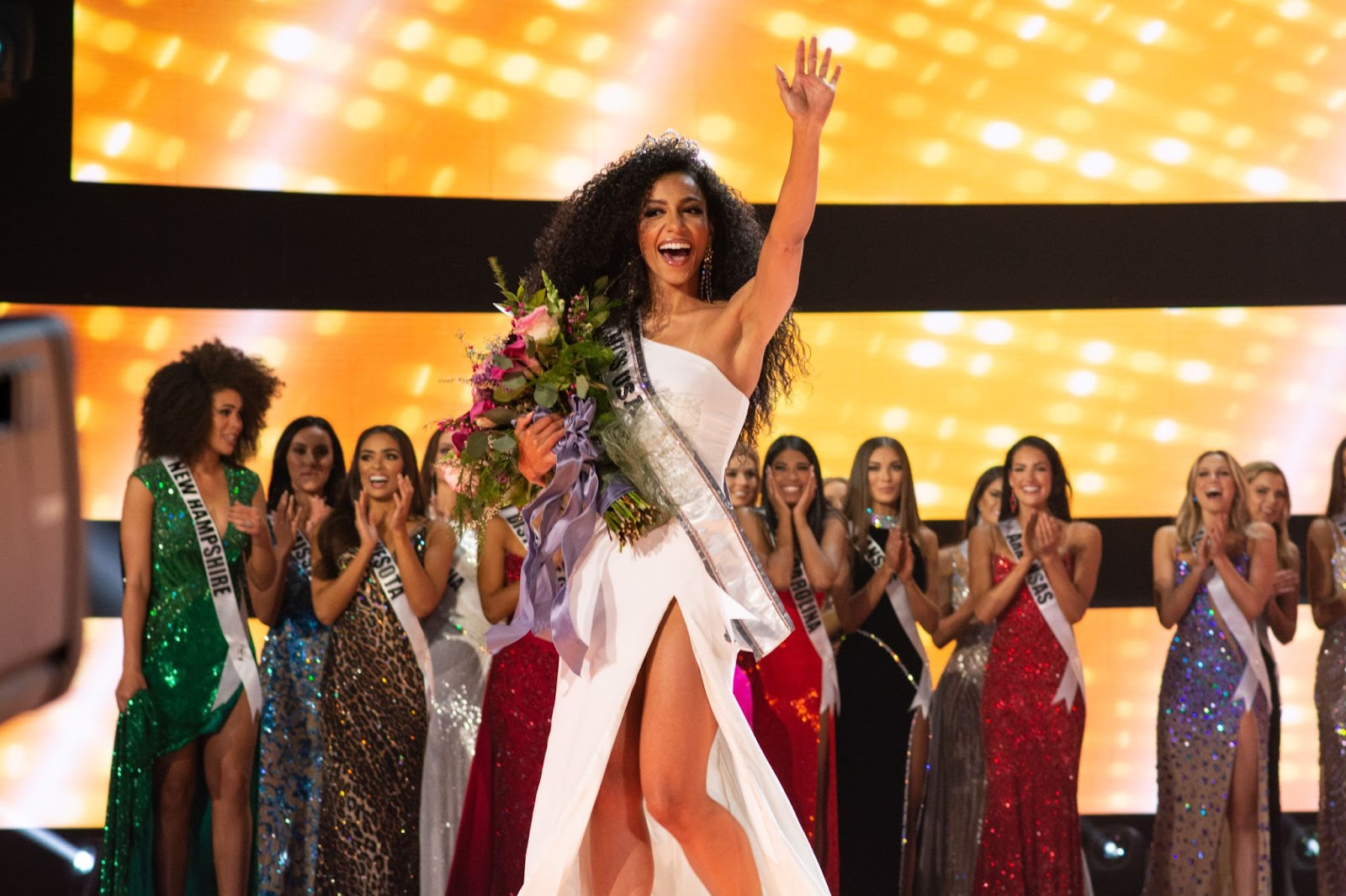
Cheslie Kryst’s Intersectional Inspiration
Read more and get $30 OFF our dresses with a FREE Queenly account
“Although more women are competing with natural hair nowadays, there still aren’t many. So, I was a little bit worried and anxious about doing it, but I thought, ‘I want to do it as the most real and authentic me,’ and that’s really what my hair represents.” — Cheslie Kryst
If you had told me that I would write my undergraduate thesis on pageantry, I would’ve thought “that’s so me, but probably impossible.” Little did I know that Cheslie Kryst’s historic win at Miss USA 2019 would inspire a year’s worth of research into the cultural and societal significance of natural hair. “Navigating Global Beauty Standards: Natural Hair and National Representation” is the culmination of four years at Carleton College, six years of competing in pageants, and watching three inspirational titleholders achieve their wildest dreams while shattering beauty standards. Please enjoy this excerpt in honor of Cheslie Kryst.
On December 8, 2019, the 68th Miss Universe pageant became a historic occurrence when Zozibini Tunzi of South Africa was awarded this prestigious title. As the crown was placed on her short afro, Tunzi became the first Black woman to win while wearing her natural hair texture. By winning the Miss Universe crown, Tunzi joined a lineage of women chosen as the most “confidently beautiful” among representatives from across the globe. Immediately after her crowning, Tunzi began using her platform to promote the acceptance of natural Black beauty, explaining to reporters that "society has been programmed for a very long time that never saw beauty in a way that was black girl magic, but now we are slowing moving to a time where women like myself can finally find a place in society, can finally know they’re beautiful.”
While Tunzi’s win was monumental within itself, the significance of her achievement was magnified when considered alongside the two other crownings that occurred within the Miss Universe Organization. On May 2, 2019, Cheslie Kryst was crowned Miss USA and earned the opportunity to compete at the annual Miss Universe pageant. Throughout the competition, and during her crowning moment, Kryst wore her hair with its natural curls.
Three days prior, Kaliegh Garris was crowned Miss Teen USA 2019 while wearing her hair in an afro, making this the first time both national titleholders were crowned wearing their natural hair. This trend of crowning women who chose to embrace their natural hair continued into the Miss Universe pageant, and Tunzi joined Kryst and Garris as one of three International Management Group (IMG) titleholders. With Tunzi completing this trio, 2019 became the first year when all three “IMG queens,” as referred to within the pageant community, were Black women who won while wearing their natural hair.
During a 2019 interview with ELLE.com, Garris explained that “For the first time in a long time the crown has been placed in natural hair (Penrose, 2019). It's something that people don't usually see on a regular basis or in these major pageant competitions. So, having that representation within the African American community has really opened up a lot of people’s eyes and has allowed people to see that people of color can accomplish really amazing things.”
Kryst echoed the importance of their wins when she stated “These wins give me a sense of hope that Kaleigh and I can both be examples and show women that they can wear their hair natural. That they don’t have to flat iron it every morning. You can wear your hair the way that it’s growing out of your head proudly out in the world.” These sentiments were continuously expressed by all three titleholders during their numerous media appearances, interviews, and speaking engagements. By speaking out about the importance of representation within pageantry, these titleholders addressed decades worth of inadequate racial diversity and highlighted the necessity of celebrating Black women who actively challenge Eurocentric beauty standards.
In winning their respective titles, Tunzi, Kryst, and Garris became leading forces in promoting Black natural beauty. While representing the Miss Universe Organization, these titleholders have promoted natural hair textures and Afrocentric hairstyles across social media platforms, on magazine covers, and in magazine spreads. Although the global beauty industry has experienced centuries worth of European influence that has caused it to favor Anglo features, this shift within pageantry could reflect the potential for larger-scale diversification in beauty standards.
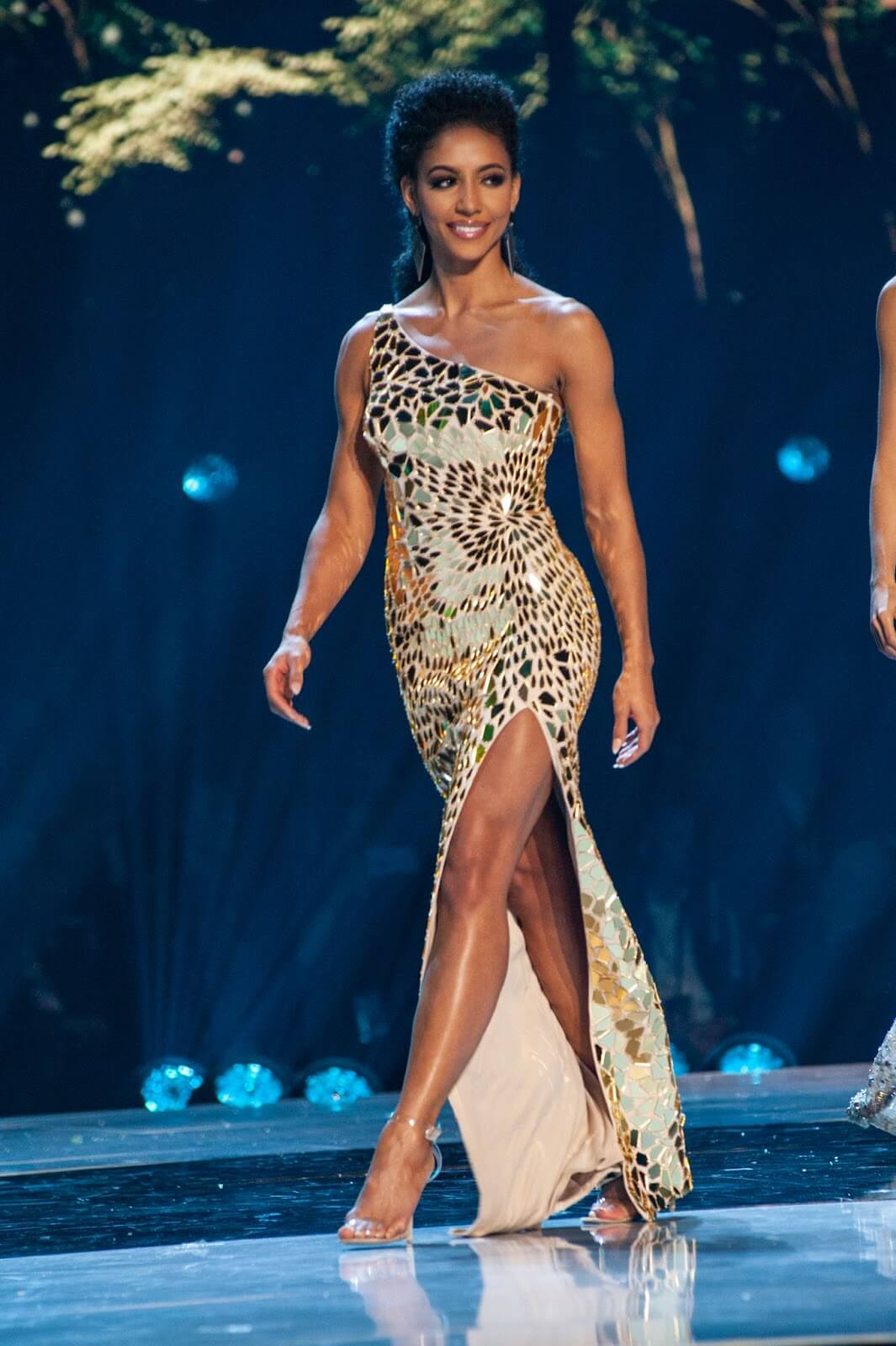
Image Credit: https://press.missuniverse.com/
What role do beauty pageants and national titleholders play in constructing national identity? Is it important for representatives to reproduce their nation’s culture at an international pageant? What is the significance of Black women wearing their natural hair at pageants? Will these USA-based pageants be able to deconstruct Western beauty standards within the international beauty industry and global pageantry? Or, which social and cultural conditions have perpetuated a singular type of representation- one that places European beauty on a pedestal?
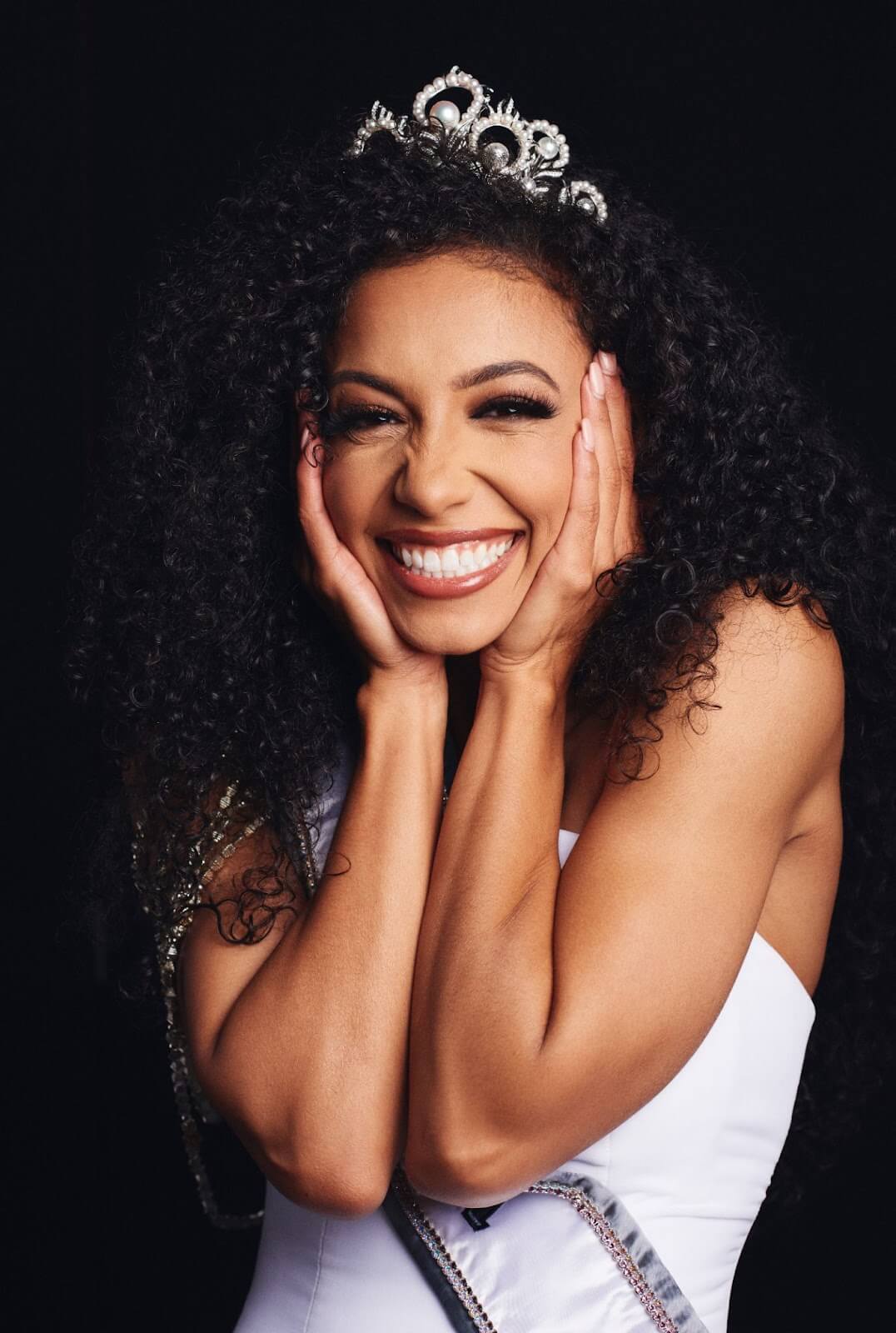
Image Credit: https://press.missuniverse.com/
In selecting the national representative for a country, pageants play a key role in constructing and redefining national identity. When a candidate becomes Miss USA, for example, she is hailed as the ideal American woman and embodiment of American femininity. This influence allows her to shift American beauty standards through her position as a national representative and beauty icon. This influence does not go unnoticed, as pageant organizers actively use their titleholders as tools to augment national and international beauty standards.
Competing at an international pageant provides titleholders with the opportunity to showcase her nation’s culture to a worldwide audience, an opportunity that is typically afforded to countries that already have a powerful, global influence. Due to its high ranking in the global hegemony, the United States is able to showcase American culture via numerous channels without having to rely on beauty pageants as a way of promoting American beauty ideals to an international audience. For countries that have less influence on global beauty standards, beauty pageants become a site of cultural expression and representation. Although they are an individual member of the population, titleholders represent the collective by embodying and reproducing their country’s collective culture on an international stage.
The Miss Universe pageant for example, includes a “national costume competition,” where contestants showcase an aspect of their nation’s culture by reproducing it through a costume. This competition is showcased to a worldwide audience, providing each country with access to an international platform This form of “cultural production” allows each nation to retain some authority over their culture, as the decision of which cultural aspect they want to reproduce is left up to the national organization. This decision, however, like most decisions regarding how one should represent their nation at an international pageant, is influenced by the global beauty industry and overarching Eurocentric beauty standards.
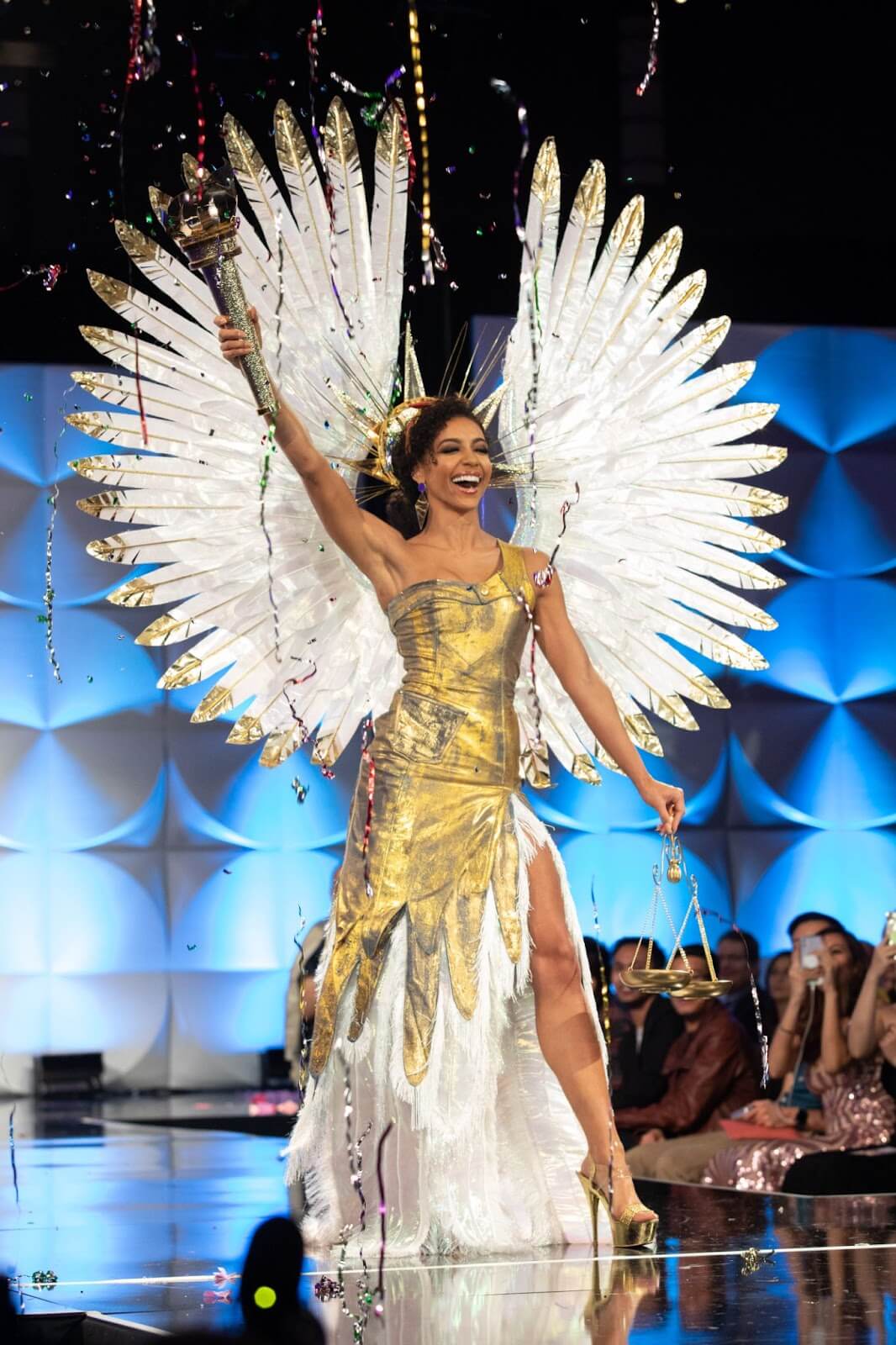
Image Credit: https://press.missuniverse.com/
As international sites of cultural expression, beauty pageants provide women with the opportunity to celebrate their country and culture on a global stage. The international beauty industry, however, has caused beauty pageants to favor titleholders who embody European features and meet Western beauty standards. The consumption of racial capital plays a key role in the selection of pageant titleholders, as the commodification of beauty queens exacerbates the constraints that Eurocentric beauty standards place on idealized feminine bodies. Although this Western power structure impacts the global pageant industry, it places different constraints on each nation.
The degree to which these power structures influence the selection of a national representative differs depending on the scope of cultural expression within each pageant. Although it is the intention that titleholders reflect and represent the entire population, these representatives are not solely judged based on national beauty standards and ideals. In order to successfully navigate international sites of cultural expression, national representatives must also conform to global Eurocentric beauty standards.
Although Eurocentric beauty standards are sustained by the international beauty industry, these standards are reconstructed and perpetuated at the local and national level. In “Colonial Faces: Beauty and Skin Color Hierarchy in the Philippines and the U.S.,” Joanna Laxamana Rondilla investigates the relationship between the globalization of beauty standards, skin color hierarchy, perceptions of beauty, and the ongoing colonial relationship between the Philippines and the U.S. By utilizing a transnational approach to compare beauty and skin color hierarchies among Filipinas in the Philippines and in the diaspora, Rondilla examined how beauty standards are constructed on both the local and global levels and how these standards impact women in the Philippines and the United States.
As a global power, the United States is not as influenced by Western notions of beauty. Similar to African countries, beauty standards and self-image in the Philippines are structured by European ideals and Westernized notions of beauty. Beauty pageants play a key role in reconstructing Eurocentric ideals through favoring Eurocentric phenotypes, primarily lighter skin. The prevalence of skin-lightening products, especially among pageant competitors, highlights the issue of colorism among competitors.
Power dynamics pertaining to beauty and race place different constraints on each nation dependent on its place in the global hegemony. Since global beauty standards are centered around whiteness, countries that are more closely aligned with Europe, and therefore aligned with “colonizers,” possess the power to “decolonize” these standards when entering international sites. Countries that are more aligned with “the colonized,” however, do not possess the power needed to enter these sites without conforming to Eurocentric ideals.
A nation’s inability to construct its own national identity via selecting a titleholder that reflects and represents the current population reinforces and perpetuates “whiteness” as the global beauty standard both internationally and within the nation. A nation that can construct its national identity without conforming to these standards, however, exemplifies greater privilege on an international level. Therefore, global power dynamics can be better understood by analyzing a nation’s relationship with beauty, race, and national identity.
Cheslie’s crowning moment is considered historic because well, it was. It can take decades for us to see the clear shift pageantry is taking towards celebrating diversity and shattering Eurocentric beauty standards, but 2019 represented a new hope for women who see themselves reflected in Cheslie, whether it be through her curly hair, professional background, or pageant performances. Cheslie was and will forever be known as one of the most accomplished Miss USAs and anyone can agree that it was an honor to have her represent the United States.
Donations in honor of Cheslie’s life and legacy can be made to Dress for Success: https://dressforsuccess.org/
